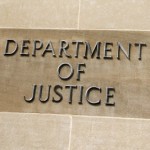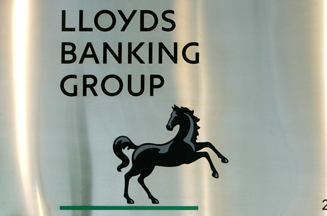 CONNECTICUT – Lloyds Banking Group PLC agreed to pay the Department of Justice an $86 million penalty for manipulation of submissions for the London InterBank Offered Rate, or LIBOR, a leading global benchmark interest rate, federal officials said Monday.
CONNECTICUT – Lloyds Banking Group PLC agreed to pay the Department of Justice an $86 million penalty for manipulation of submissions for the London InterBank Offered Rate, or LIBOR, a leading global benchmark interest rate, federal officials said Monday.
“For more than three years, traders at Lloyds manipulated the bank’s LIBOR submissions for three currencies to benefit the trading positions of themselves and their friends, to the detriment of the parties on the other side of the trades,” said Assistant Attorney General Leslie Caldwell. “Because investors and consumers rely on LIBOR’s integrity, rate-rigging fundamentally undermines confidence in financial markets.”
Adding “Lloyds is the fifth major financial institution that has admitted LIBOR manipulation and paid a criminal penalty, and nine individuals have been criminally charged by the Justice Department. Our active investigation continues, as we work to restore trust in the markets.”
Together with about $283 million in criminal and penalties imposed by other agencies in actions arising out of the same conduct – $105 million by the Commodity Futures Trading Commission, and about $178 million by the U.K. Financial Conduct Authority – the Justice Department’s $86 million criminal penalty brings the total amount to be paid by Lloyds to almost $370 million, according to officials.
A criminal information is expected to be filed Monday in U.S. District Court in Connecticut that charges Lloyds as part of a deferred prosecution agreement, officials said. The information charges Lloyds with wire fraud for its role in manipulating LIBOR.
In addition to the $86 million penalty, the DPA requires the bank to admit and accept responsibility for its misconduct as described in an extensive statement of facts.
In a written statement, Lloyds said: “The group condemns the actions of the individuals responsible for the conduct in question, which it regards as totally unacceptable and unrepresentative of the cultural changes that the group has implemented,” according to Market Watch.
This ongoing investigation is being conducted by special agents, forensic accountants, and intelligence analysts of the FBI’s Washington Field Office.
Lloyds agreed to continue cooperating with the Justice Department in its ongoing investigation of the manipulation of benchmark interest rates by other financial institutions and individuals.
LIBOR’s Sets Benchmark for Short-Term Interest Rates
According to signed documents, LIBOR is an average interest rate, calculated based upon submissions from leading banks around the world and reflecting the rates those banks believe they would be charged if borrowing from other banks.
LIBOR serves as the primary benchmark for short-term interest rates globally and is used as a reference rate for many interest rate contracts, mortgages, credit cards, student loans and other consumer lending products.
The Bank of International Settlements estimated that as of the second half of 2009, outstanding interest rate contracts were valued at approximately $450 trillion.
At the time relevant to the conduct in the criminal information, LIBOR was published by the British Bankers’ Association, a trade association based in London.
LIBOR was calculated for 10 currencies at 15 borrowing periods, known as maturities, ranging from overnight to one year.
The LIBOR for a given currency at a specific maturity was the result of a calculation based upon submissions from a panel of banks for that currency (the Contributor Panel) selected by the British Bankers Association.
From at least 2006 through the present, Lloyds (through its subsidiaries) has been a member of the Contributor Panel for a number of currencies, including United States Dollar LIBOR, Pound Sterling LIBOR, and Yen LIBOR.
According to the statement of facts accompanying the agreement, between at least as early as 2006 and at least as late as July 2009, Lloyds’s LIBOR submitters for Dollar LIBOR, Yen LIBOR, and Pound Sterling LIBOR submitted LIBOR contributions intended to benefit their own trading positions or the trading positions of others , rather than rates that complied with the definition of LIBOR.
When Lloyds LIBOR submitters contributed LIBOR submissions to benefit trading positions, the manipulation of the submissions affected the fixed rates on occasion.
Signed Documents and Manipulation Communication
According to signed documents, on May 19, 2009, a money markets trader who was a former Dollar LIBOR submitter at a subsidiary of Lloyds wrote to the then-current Dollar LIBOR submitter:
“have 5 yard [billion] 3 month liability rolls today so would be advantageous to have lower 3month libor setting if doesn’t conflict with any of your fix’s.” Later that day, the Dollar LIBOR submitter told the money markets trader in a phone call: “obviously we got the Libors down for you.”
In another example, on March 6, 2009, a money markets trader who was a former Pound Sterling LIBOR submitter for a subsidiary of Lloyds told the then-current Pound Sterling LIBOR submitter:
“Um, I’m paying on 12 yards [billions] of 1s today, . . . so if there is any way of making 1s relatively low it would just be helpful for us all.”
That day, the Pound Sterling LIBOR submitter contributed a rate that was ten basis points lower than the previous day’s submission.
Also according to the statement of facts, a Yen LIBOR submitter and a former submitter at Coöperatieve Centrale Raiffeisen-Boerenleenbank B.A. (Rabobank) who traded money-markets and derivatives products had an agreement to submit Yen LIBOR contributions that benefitted their respective trading positions, rather than submissions that complied with the definition of LIBOR.
For example, on July 28, 2006, the Rabobank submitter wrote to the Yen LIBOR submitter:
“morning skipper…..will be setting an obscenely high 1m again today…poss 38 just fyi.” The Yen LIBOR submitter responded: “(K)…oh dear..my poor customers….hehehe!! manual input libors again today then!!!!” Both banks’ submissions on July 28 moved up one basis point, from 0.37 to 0.38.

